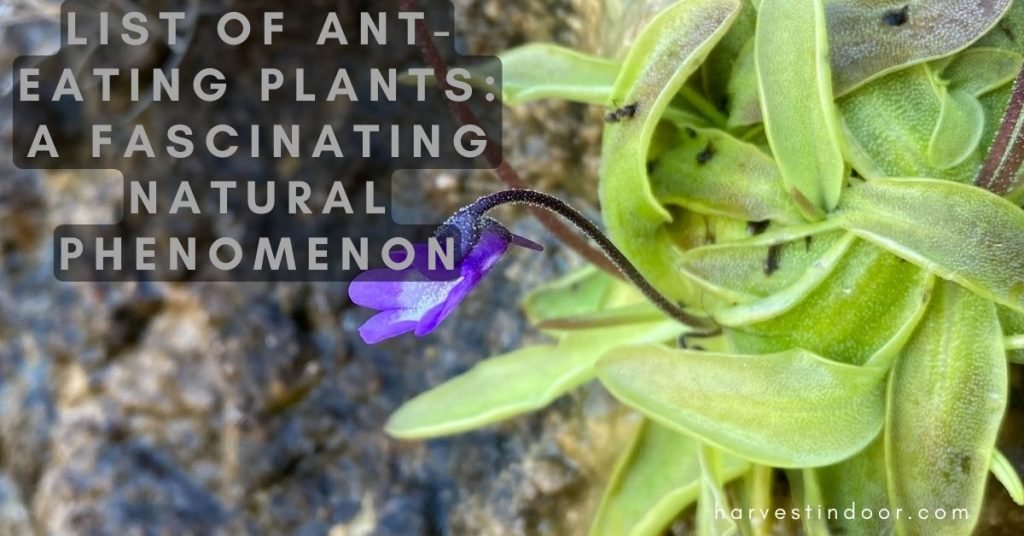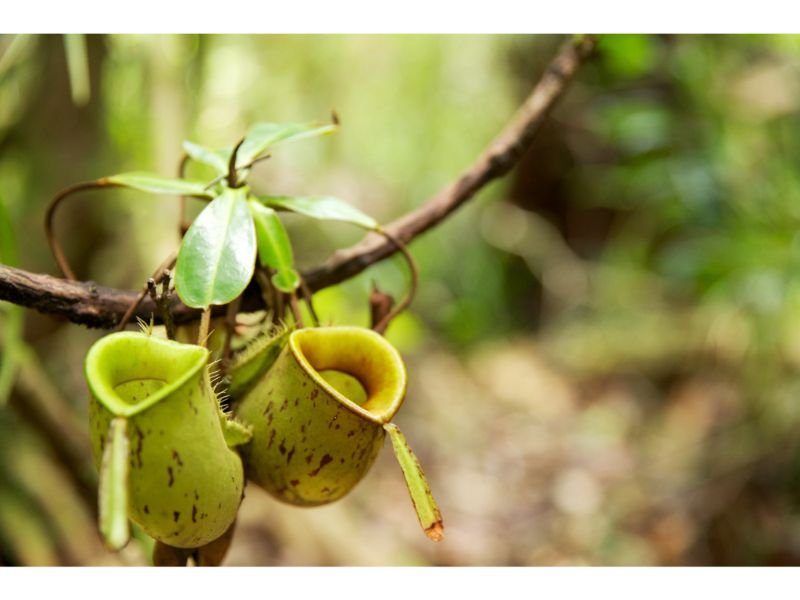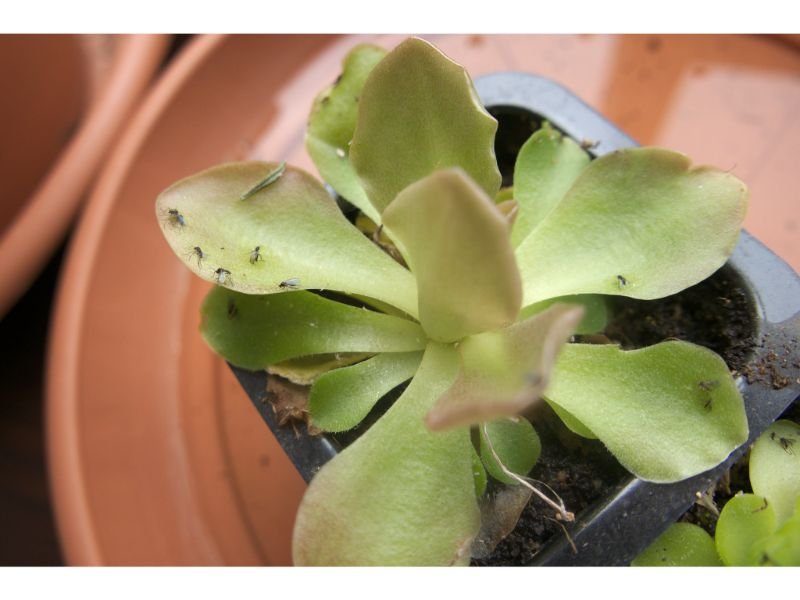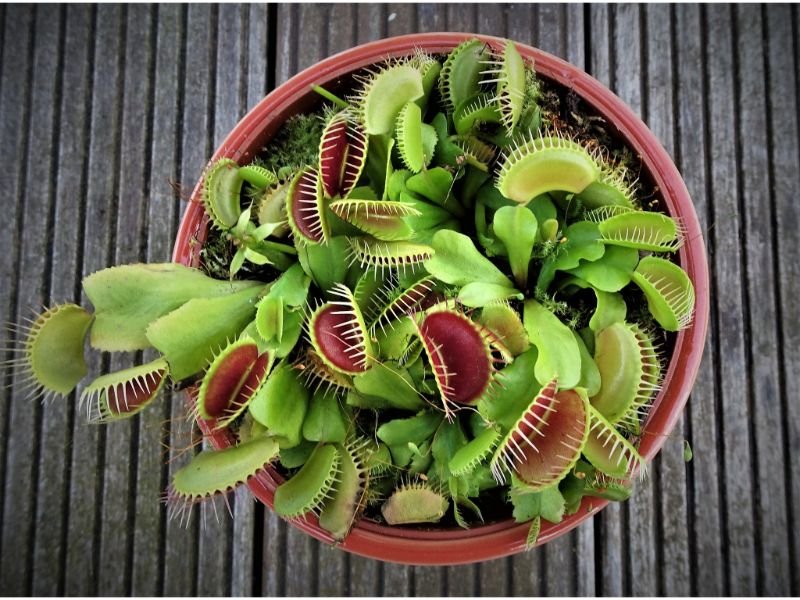Some ant-eating plants are Tropical Pitcher (Nepenthes spp.), European Butterwort (Pinguicula vulgaris), Venus Flytrap (Dionaea muscipula), and Sundews (Drosera spp.)

Plants have evolved in extraordinary ways to adapt to their environments and ensure their survival. One such adaptation is the ability of certain plants to consume ants. These remarkable species have developed various mechanisms to attract, capture, and digest ants as a source of nutrients.
In this article, we will delve into the captivating world of plants that eat ants, exploring their characteristics, types, and intriguing behaviors.
Table of Contents
What Are Ant-Eating Plants?
Ant-eating plants, also known as myrmecophytes, are plant species that have evolved to attract, capture, and consume ants. These plants have developed specialized adaptations, such as sticky surfaces, traps, or specialized structures, to entice and capture ants. By consuming ants, these plants obtain essential nutrients, particularly nitrogen, which is often limited in their natural habitats.
Carnivorous Plants and Their Adaptations
Carnivorous plants, a subset of ant-eating plants, have evolved extraordinary adaptations to capture and digest insects, including ants. They have developed various mechanisms, such as modified leaves, to trap their prey.
Common types of carnivorous plants include pitcher plants, Venus flytraps, sundews, and butterworts. Each species has unique adaptations suited to its specific environment and prey.
Pitcher plants, for instance, feature deep, pitcher-shaped leaves filled with digestive enzymes at the bottom. When an ant is lured by the plant’s nectar, it slips into the pitcher and becomes trapped. The enzymes then break down the ant’s body, allowing the plant to absorb the released nutrients.
Venus flytraps, on the other hand, have hinged leaves with sensitive trigger hairs. When an ant or other small insect touches the trigger hairs, the trap snaps shut, entrapping the prey. The plant then secretes digestive enzymes to break down the insect’s body and absorb the nutrients.
Ant-Eating Plants Around the World
Ant-eating plants can be found in various regions around the world, each with its unique set of plant species and adaptations. Rainforests, wetlands, and bogs are particularly rich in ant-eating plant diversity due to their high moisture content and nutrient-poor soil.
In tropical rainforests, plants like the tropical pitcher plant (Nepenthes spp.) and ant-plant (Hirtella physophora) showcase fascinating adaptations to attract and capture ants. In temperate regions, ant-eating plants such as the European butterwort (Pinguicula vulgaris) and the North American pitcher plant (Sarracenia spp.) thrive.
Examples of Plants That Eat Ants
Let’s explore some notable examples of plants that eat ants:
A. Tropical Pitcher Plant (Nepenthes spp.)

The tropical pitcher plant is a carnivorous plant found in tropical rainforests. Its distinctive pitcher-shaped leaves attract ants with nectar secretions. Once an ant enters the pitcher, it becomes trapped, eventually drowning in the fluid at the bottom. The plant then digests the ant’s body, absorbing the nutrients.
B. European Butterwort (Pinguicula vulgaris)

The European butterwort is a small carnivorous plant found in damp habitats. It has broad leaves covered in sticky hairs that produce sweet-smelling mucilage. Ants, attracted by the scent, become stuck to the leaves. The plant’s enzymes then break down the ant’s body, allowing for nutrient absorption.
C. Venus Flytrap (Dionaea muscipula)

The Venus flytrap is perhaps one of the most famous carnivorous plants. Native to the southeastern United States, it has hinged leaves with trigger hairs. When an ant or other small insect touches the trigger hairs, the trap snaps shut, entrapping the prey. The plant then secretes digestive enzymes to break down the insect’s body and absorb the nutrients.
Venus flytrap is certainly one of the most popular carnivorous plants out there. They have been ‘tame’ to grow indoors or as terrarium plants. Despite the scary look this plant often associates with knowledge and wisdom in some cultures.
D. Sundews (Drosera spp.)

Sundews are carnivorous plants with tentacle-like structures covered in sticky glandular hairs. These hairs exude a substance that attracts ants and other insects. Once an ant lands on a sundew’s leaf, the hairs slowly curl around the prey, enveloping it in a sticky embrace. The plant’s enzymes then dissolve the ant’s body, allowing nutrient absorption.
Unique Mechanisms of Ant Capture
Ant-eating plants employ various mechanisms to capture ants effectively. These mechanisms often involve attractive cues, traps, or structures that hinder an ant’s escape.
A. Sticky Traps
Some ant-eating plants have leaves or structures covered in sticky substances, such as glandular hairs or secretions. These sticky traps immobilize ants, preventing their escape and ensuring they become a source of nutrients for the plant.
B. Pitfall Traps
Certain plants, like pitcher plants, use pitfall traps to capture ants. These traps feature a deep cavity filled with digestive enzymes. Ants are lured by attractive scents or nectar secretions, fall into the cavity, and are subsequently digested by the plant.
C. Snap Traps
Snap traps, such as those found in Venus flytraps, utilize rapid leaf movements to capture ants. When an ant triggers sensitive trigger hairs on the leaf surface, the trap snaps shut, trapping the prey within its leaf folds. The plant then digests the ant for nutrition.
The Symbiotic Relationship Between Ants and Plants
In certain cases, plants and ants have developed mutually beneficial relationships known as symbiosis. Ants protect plants from herbivores, remove competing plants, and provide nutrients through their waste. In return, plants offer shelter, nesting sites, and food sources to the ants. This symbiotic relationship benefits both parties, allowing them to thrive in their respective environments.
Ant-Eating Plants in Popular Culture
Ant-eating plants have captured the imagination of people worldwide and have become a subject of fascination in popular culture. From literature to movies and artwork, these unique plants have made appearances in various forms of media, captivating audiences with their intriguing adaptations and behaviors.
Benefits of Ant-Eating Plants
Ant-eating plants play essential roles in their respective ecosystems and offer several benefits:
- Natural pest control: By consuming ants, these plants help regulate ant populations, which can sometimes be detrimental to certain ecosystems or agricultural areas.
- Nutrient cycling: Ant-eating plants contribute to the recycling of nutrients by breaking down ants’ bodies, releasing valuable nutrients back into the environment.
- Biodiversity support: The presence of ant-eating plants indicates a healthy ecosystem and supports biodiversity by providing habitat and food sources for various organisms.
Ant-Eating Plants in the Ecosystem
Ant-eating plants are integral components of their ecosystems, influencing various ecological processes. Their adaptations and behaviors contribute to nutrient cycling, pollination, and the structure of plant communities. The presence of these plants often signifies a healthy and diverse ecosystem.
Frequently Asked Questions (FAQs)
Q: How do ant-eating plants digest ants?
Ant-eating plants secrete digestive enzymes that break down the bodies of ants and other prey. These enzymes help dissolve the insect’s tissues, allowing the plant to absorb the released nutrients.
Q: Are ant-eating plants harmful to humans?
Most ant-eating plants pose no threat to humans. However, it is essential to exercise caution and avoid direct contact or ingestion, as some carnivorous plants may cause mild irritation or allergic reactions in sensitive individuals.
Q: Can I grow ant-eating plants at home?
Yes, several ant-eating plants can be cultivated in controlled environments, such as terrariums or bog gardens. Research the specific care requirements of the plant species you wish to grow and provide the appropriate conditions, such as humidity, light, and substrate.
Q: Are all ants susceptible to ant-eating plants?
Different ant species exhibit varying levels of susceptibility to ant-eating plants. Some plants have coevolved with specific ant species and rely on their attraction and capture. However, most ant-eating plants can capture and consume a wide range of ant species.
Q: Do ant-eating plants eat anything other than ants?
While ants are a primary source of nutrition for ant-eating plants, they may also capture and consume other small insects, such as flies, beetles, and spiders, depending on the species.
Q: Are there any endangered ant-eating plant species?
Yes, certain ant-eating plants are classified as endangered due to habitat loss, poaching, and illegal collection. Conservation efforts are crucial to protect these unique and ecologically important species.
Conclusion
The world of plants that eat ants is filled with intrigue, showcasing nature’s incredible adaptations and symbiotic relationships. From carnivorous plants with specialized traps to ant plants forming mutually beneficial bonds, these species captivate us with their extraordinary strategies for survival.
By understanding and appreciating these unique plants, we gain a deeper appreciation for the remarkable diversity and complexity of the natural world.

Gardening is my passion and growing plants indoors has always been a stress relief for me. Grow a banana tree in my apartment once (although failed to produce bananas).






